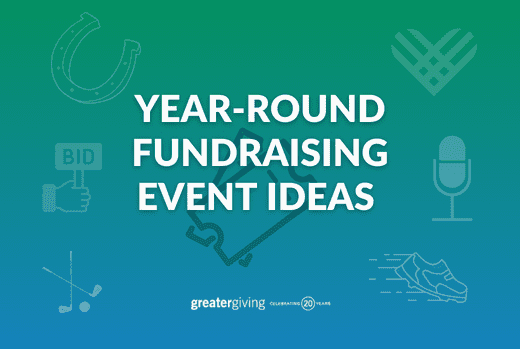Top Nonprofit Fundraising Ideas: Cutting-edge Methods to Increase Even More Funds
Top Nonprofit Fundraising Ideas: Cutting-edge Methods to Increase Even More Funds
Blog Article
The Function of Community Engagement in Nonprofit Fundraising: Structure Lasting Relationships for Lasting Support
Community engagement is progressively recognized as an important component of successful not-for-profit fundraising. The approaches and techniques utilized to involve areas vary widely, increasing crucial inquiries about effectiveness and effect.
Recognizing Community Engagement
Community involvement is an important component of effective nonprofit fundraising efforts. Nonprofits must determine crucial stakeholders-- such as neighborhood members, regional services, and other organizations-- to develop efficient involvement methods.
Reliable neighborhood engagement is based on energetic listening and responsiveness to the requirements and passions of the community. This procedure involves soliciting responses, recognizing area characteristics, and guaranteeing that the organization's goal aligns with regional top priorities. Engaging the neighborhood can take different forms, consisting of public conferences, volunteer possibilities, and collaboration efforts, each created to encourage participation and financial investment in the organization's objectives.
Additionally, area interaction must be approached as a recurring discussion rather than a single effort. By promoting a comprehensive setting where community voices are heard and valued, nonprofits can construct a strong foundation for future fundraising ventures. Ultimately, a deep understanding of area engagement equips companies to develop authentic connections that improve their overall efficiency and sustainability.
Advantages of Solid Relationships
Strong partnerships created through neighborhood involvement return various advantages for not-for-profit fundraising initiatives. Primarily, these partnerships foster trust fund and reputation, important elements in motivating donors to contribute. When possible advocates see a nonprofit proactively associated with their community, they are most likely to count on its objective and influence.

Furthermore, these relationships promote efficient communication. Nonprofits can utilize their links to share stories of influence, updates, and requires, making certain that advocates continue to be enlightened and involved. This open line of communication not only enhances bonds but likewise encourages word-of-mouth promotion, increasing the not-for-profit's reach.
Finally, strong area ties can bring in brand-new partners and sponsors. Organizations and individuals are extra likely to straighten with companies that demonstrate purposeful area participation, offering added sources and support that can significantly enhance fundraising capacities. Thus, growing robust relationships with area involvement is indispensable to a nonprofit's lasting fundraising success.
Approaches for Effective Involvement
How can nonprofits effectively involve their communities to improve fundraising initiatives? Regular updates, involving web content, and calls-to-action can galvanize neighborhood passion and engagement.
2nd, hosting area events, such as workshops, volunteer chances, or fundraising drives, promotes face-to-face communication, permitting nonprofits to display their impact and efforts. These occasions not just elevate funds but likewise grow connections and permit neighborhood members to involve directly with the reason.
Third, applying individualized communication strategies can boost involvement. Customizing messages to certain donor sections based on rate of interests and previous payments cultivates a sense of belonging and financial investment in the organization's mission.
Last but not least, creating directory collaborations with regional organizations and neighborhood leaders can intensify outreach efforts. Joint initiatives can boost visibility and trustworthiness, showing a collective dedication to the community's wellness. By incorporating these techniques, nonprofits can construct long lasting partnerships that boost fundraising initiatives and drive sustainable assistance.
Determining Involvement Success
While involving the neighborhood is essential for effective not-for-profit fundraising, measuring the effectiveness of these interaction initiatives is similarly vital. Establishing clear metrics permits organizations to analyze how well they are linking with their target market and attaining their fundraising objectives. Secret performance indications (KPIs) such as donor retention rates, volunteer engagement levels, and interaction on social networks systems provide tangible data for examination.

On a regular basis evaluating these metrics enables companies to pivot their techniques when necessary, ensuring that neighborhood engagement continues to be lined up with their overall goal. Additionally, sharing these outcomes with stakeholders promotes transparency and constructs depend on, urging further neighborhood participation. Eventually, a durable measurement structure not only notifies future fundraising initiatives but also enhances the relationship between the not-for-profit and its advocates, laying the foundation for sustainable success.
Study in Area Impact
Various case studies show the profound effect that community that site interaction can carry not-for-profit fundraising success. One noteworthy instance is the "Food for Idea" initiative, where a local food financial institution partnered with companies and institutions to host area suppers. These events not just increased funds however additionally promoted a sense of belonging amongst individuals, considerably boosting benefactor retention prices.
Another compelling situation is the "Eco-friendly Spaces Job," which entailed neighborhood homeowners in the revitalization of urban parks. This initiative not only gathered financial backing from neighborhood organizations but also cultivated a volunteer base that contributed to ongoing maintenance and programming. The sense of ownership and pride among community members translated into sustained payments.
In the world of arts, the "Art for All" campaign successfully engaged local artists and clients to develop joint art installments, resulting in boosted presence and contributions for a regional arts nonprofit.
These instances highlight that when nonprofits prioritize community participation, they can create long-term relationships that improve fundraising initiatives, ensuring lasting assistance and promoting a lively neighborhood culture. Such situations show that neighborhood interaction is not merely a strategy but a vital pillar of not-for-profit success.
Final Thought
To conclude, community interaction is indispensable to the success of nonprofit fundraising initiatives. By fostering solid relationships with neighborhood stakeholders, organizations boost count on and trustworthiness, causing improved donor retention and loyalty. Implementing effective involvement strategies and determining their influence makes certain that nonprofits can adapt and grow. Ultimately, a robust structure of community assistance not only amplifies fundraising potential yet additionally grows a culture of partnership, necessary for achieving lasting organizational goals and sustaining meaningful effect.
Nonprofits should identify essential stakeholders-- such as community members, neighborhood organizations, and various other companies-- to develop efficient involvement methods.

In verdict, community engagement is essential to the success of nonprofit fundraising efforts.
Report this page